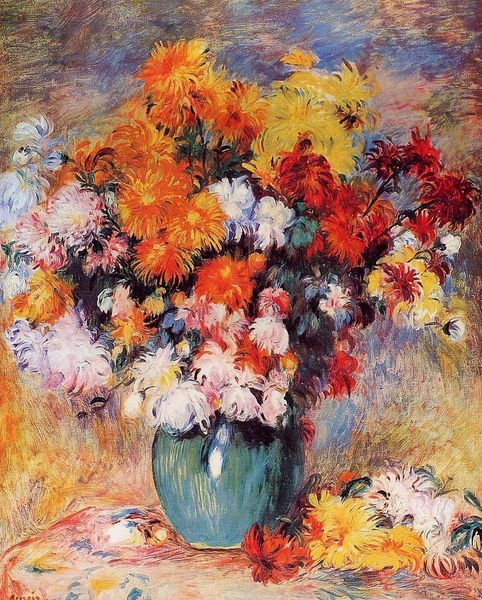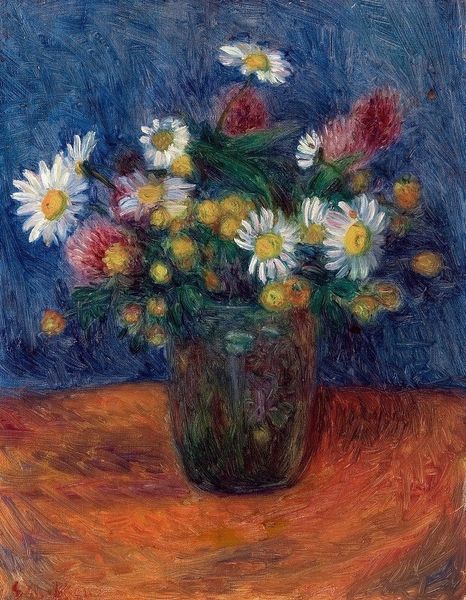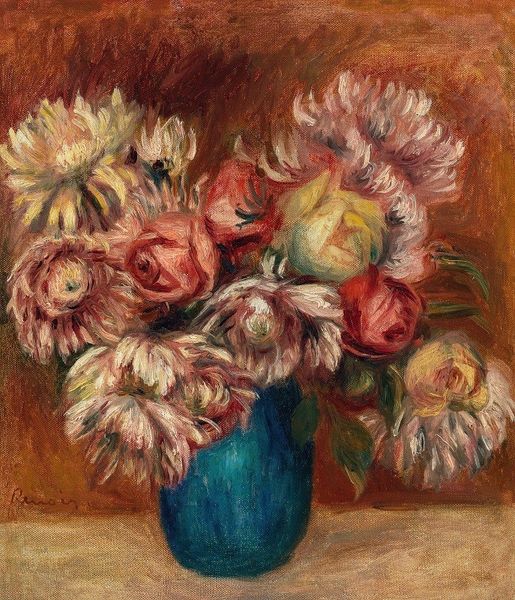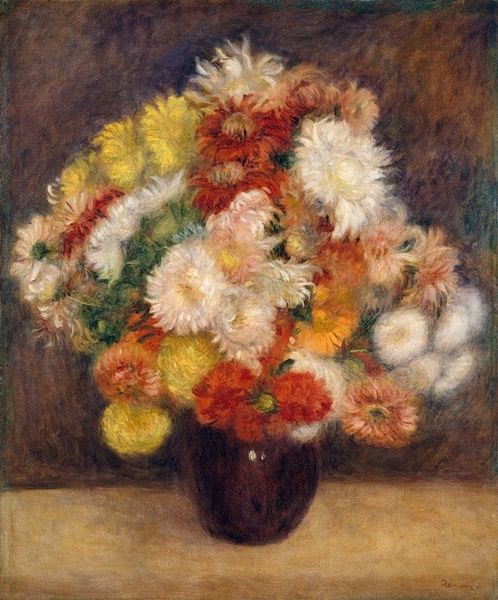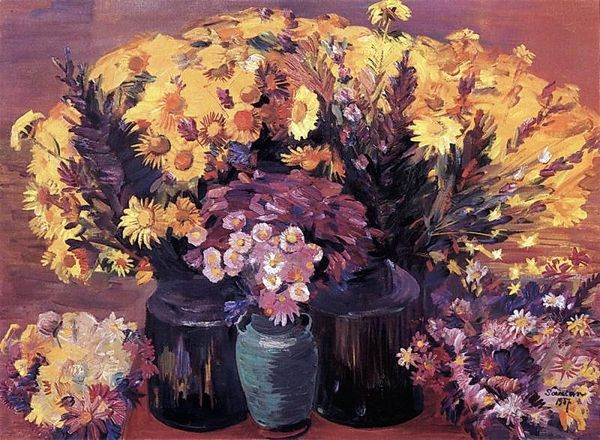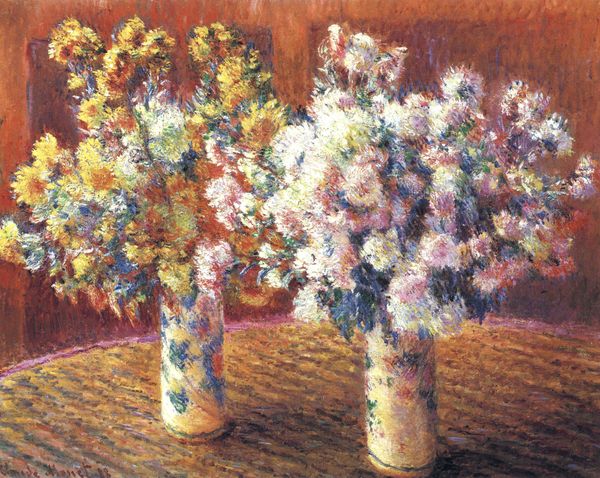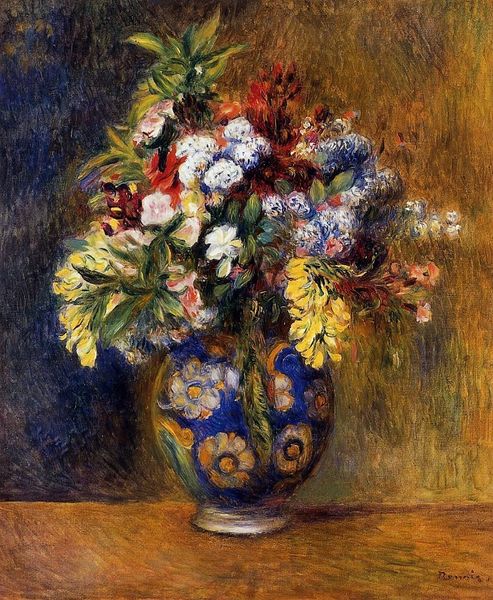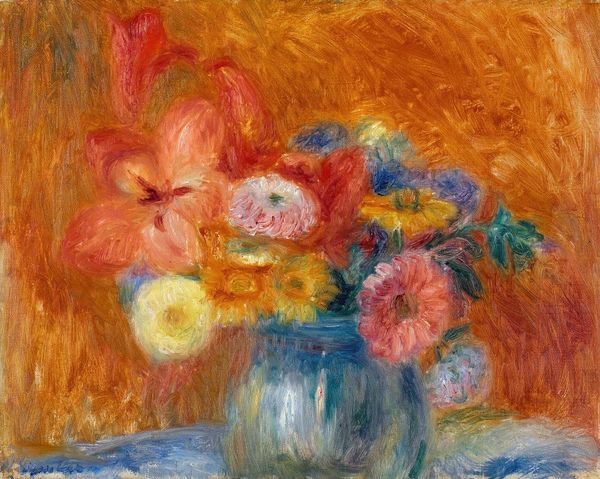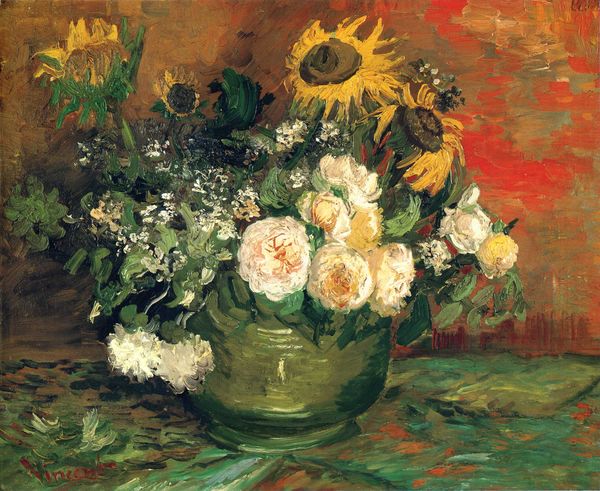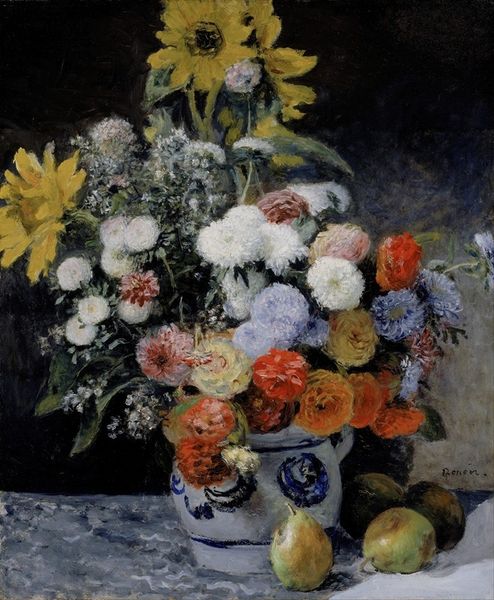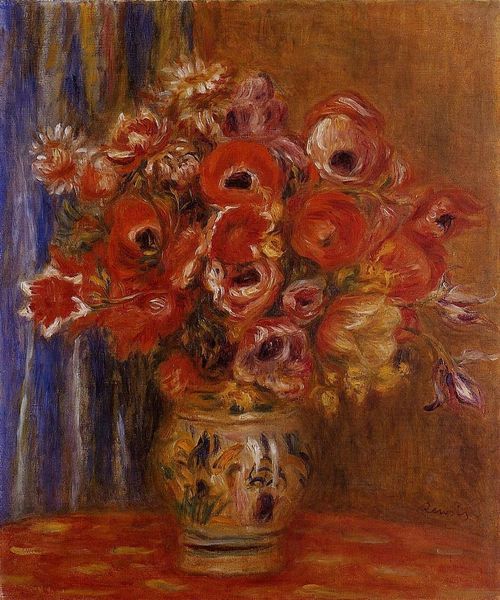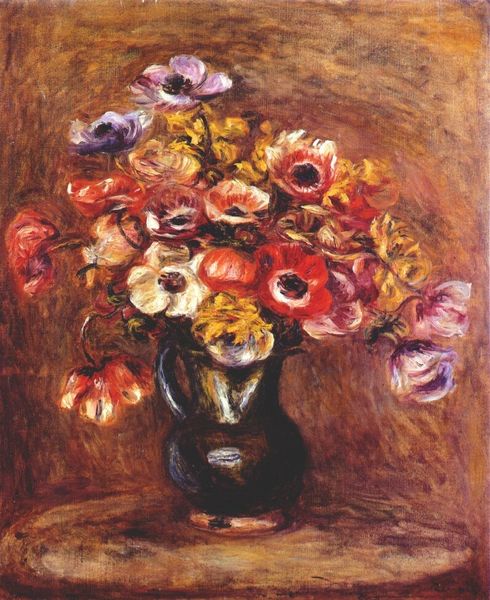
Copyright: Public domain
Curator: This is Gustave Caillebotte's "Four Vases of Chrysanthemums," completed in 1893, and currently held in a private collection. Editor: It strikes me immediately as quite gentle. The softness of the light, the repetition of rounded forms... it’s all very soothing, very visually palatable. Curator: Absolutely. Caillebotte employs a masterful orchestration of color and texture here. Observe the juxtaposition of the impasto-laden flowers with the smoother surface of the tabletop, for instance. It creates a tangible sense of depth. Editor: I'm interested in that table top and the arrangement. The perspective, deliberately skewed, and the flowers casually posed on a relatively commonplace wicker table – I think it reveals Caillebotte’s efforts to normalize domestic life, elevating these routine arrangements of chrysanthemums, into subject matter worth artistic exploration. This wasn’t just about botanical illustration; it was about observing modern existence. Curator: An insightful point. We see in his compositions, an exploration of spatial dynamics. Note how he deliberately crops the arrangements to draw your eye around the image? There’s an asymmetry that, rather than unsettling, engages the viewer in actively constructing the visual field. Editor: Indeed, and if we consider this within the broader context of Impressionism, this artistic choice is quite radical. The fleeting moment, capturing ephemeral light is giving way here to something quieter. It almost anticipates the post-Impressionists in a turn inward. Curator: Well, yes. Post-Impressionism involved subjective visions. However, Caillebotte here demonstrates that meticulous arrangements of elements – shape, color, depth - can result in something beyond mere description. He presents, through aesthetic form, an argument for attentive seeing itself. Editor: A testament to the idea that meaning isn't just found, it’s crafted through engagement. A sentiment I feel even more clearly informed through appreciating the way the arrangement fits into its historical context. Curator: Precisely. Ultimately, the strength of the work, resides in how it uses elements in subtle, surprising ways. Editor: Agreed. It's an everyday subject, refined with subtle touches of class awareness. A window into how art reflects our shifting values.
Comments
No comments
Be the first to comment and join the conversation on the ultimate creative platform.

